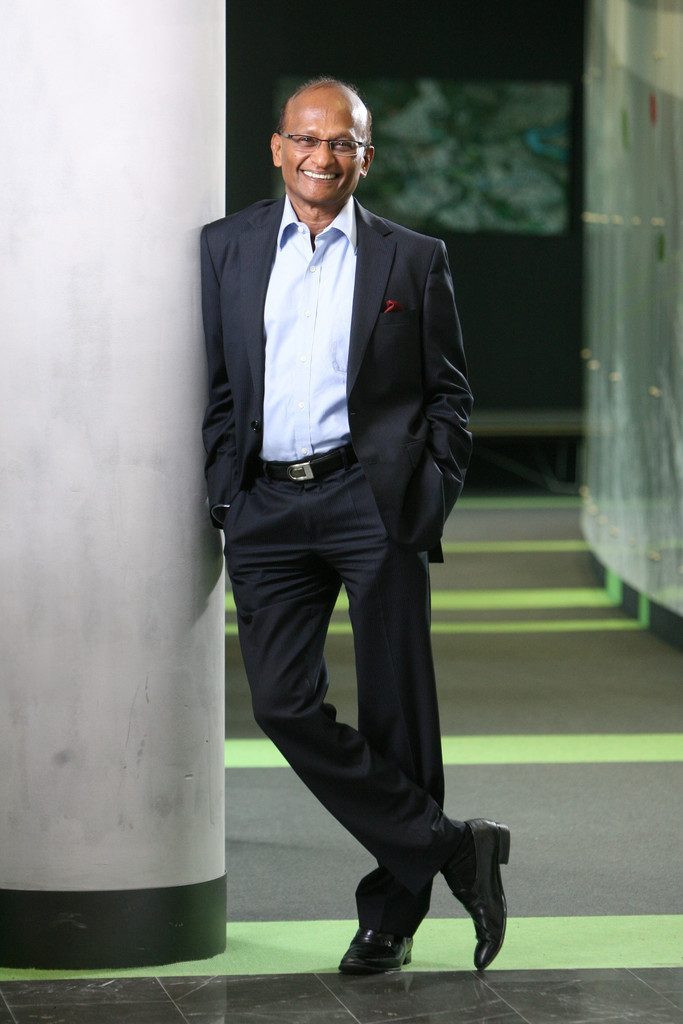By Azman Ujang

KUALA LUMPUR, Feb 10 (NNN-BERNAMA) — The journey from Negeri Sembilan to Queensland, Australia can take a day if you travel by plane, but for Maha Sinnathamby, it has taken a lifetime.
The billionaire was born in the village of Rantau 80 years ago and never dreamed he would one day become one of Australia’s richest men, let alone the founder of one of the most successful master-planned cities in the world.
But now, 28 years after buying a 2,860ha parcel of land that all before him had said was worthless, Sinnathamby holds the keys to an A$88 billion development that is home to 43,000 residents – a far cry from the humble rubber plantation hut where he was born.
The thriving metropolis of Greater Springfield in one of Australia’s fastest-growing growth corridors, 25km from Brisbane, is the nation’s largest master-planned city since the national capital, Canberra.
Where others saw trees and hills, Sinnathamby saw potential. Raised with the belief that education was the manifestation of the perfection already in humankind, he envisaged a city that put learning at its heart and in 1992 bought the land and set about building it.
“I was born in war-torn Malaysia and grew up in abject poverty in a small village with no electricity and very little running water. I studied under a kerosene lamp and I was not a naturally gifted student,” he told Bernama from Brisbane.
“But I knew that education was the currency of the future. Education is the only currency that can be cashed anywhere in the world. Education is the only currency that cannot be stolen from its owner and failure of education is the collapse of a nation,” Sinnathamby said.
“To me, education is the very soul of Springfield City and, as a learning city, students now make up 44.6% of our population – some 15,000 students in 11 schools, a university and college with a current population of 43,000.”

Greater Springfield is, however, more than a city of schools. It’s also a city of the future, recognised as a project of national significance, and awarded the FIABCI Prix D’Excellence Award for the World’s Best Master Planned Community.
Now for the first time ever, Sinnathamby, and his business partner Bob Sharpless, are seeking a partner, or consortia of partners, who are committed to working with their company, Springfield City Group, to fast track the growth of the city’s economy and build even greater amenity for its people and the city.
“This is an invitation for the market to get involved in a unique project, recognised by former Prime Minister Malcolm Turnbull as nation-building,” Sinnathamby said.
“The cornerstones are already in place, A$8 billion of highway and rail links are built and there are eleven schools, a university and a hospital – the hard work has been done.
“We are looking for a partner, or partners, who want to work with us to realise our vision of building Australia’s most futuristic city, built on the pillars of health, education and technology, with an aspiration for one job for every three residents.”
Legislation to allow planning approval for the city was passed unanimously by the Queensland Parliament in 1997, which means in addition to a future population of over 136,000 residents, Greater Springfield is also home to 2,685,600 sq metres of future mixed-use gross floor area. By comparison, the entire amount of privately owned commercial floorspace in central Singapore only equates to 3,625,237 sq metres.
“Greater Springfield’s potential is tremendous,” added Sinnathamby.
Designed around a detailed master plan, anchored on the tenets of health, education, and technology, the city already includes a 52-hectare health precinct, designed by Harvard Medical School, and anchored by the Mater hospital, with approval for 1,200 beds.
An 18-hectare education precinct with capacity for 10,000 students is anchored by a University of Southern Queensland campus. The city is also home to the award-winning Orion shopping centre, with more than 6.9 million customer visits a year, and the future headquarters of the Brisbane Lions Australian football team.
Much of the development has been completed through long-term partnerships with Australian property groups Lendlease, Aveo and Chinese major corporate R&F properties.
So far A$18 billion has been invested into the project, with a further A$70 billion expected to be required to fully realise the master plan.
The Australian arm of global investment bank Moelis has been appointed to lead the global search for a partner in its quest to accelerate growth.
Moelis Australia Managing Director and CEO Andrew Pridham has described Greater Springfield as a global benchmark for city creation, and an outstanding investment opportunity for a partner who wanted greenfield space, access to a young, aspirational population, and a pipeline of opportunities in a strong growth market.
“The South West corridor of South East Queensland is one of the highest performing growth corridors in the country, with government projections indicating it will grow faster and sooner than all others in the region,” Pridham said.
“This population growth underpins a great deal of confidence about future demand for key services and sectors, and highlights the potential of the long-term opportunity at Greater Springfield, the key urban centre for the corridor.”
Multinational energy conglomerate Engie also has Springfield on its list of partners, along with Singapore, Paris and Barcelona. The Engie partnership is part of a historic 50-year strategic alliance to invest in renewable energy generation and storage infrastructure, district energy schemes, green mobility solutions, energy efficiency initiatives and a dedicated research and innovation centre.
— NNN-BERNAMA
